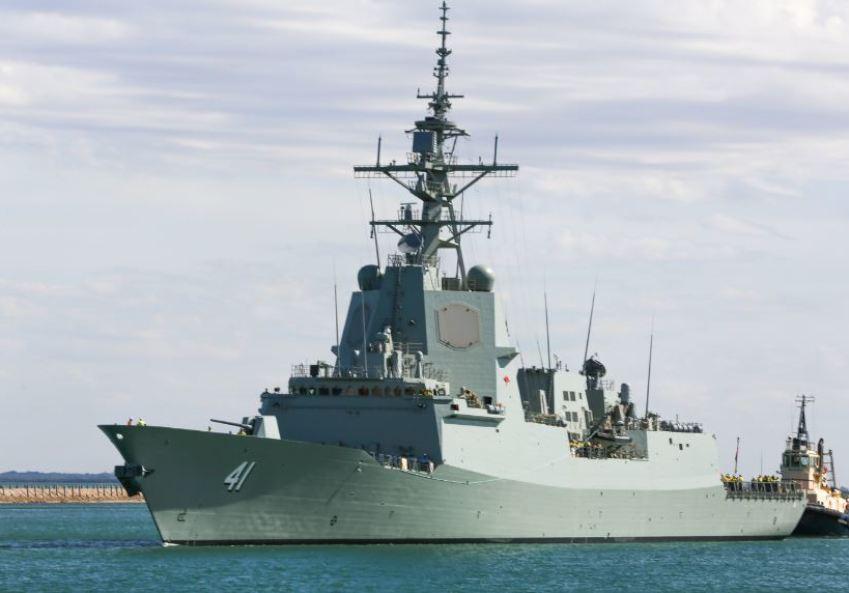The Royal Australian Navy’s newest guided-missile destroyer, HMAS Brisbane, has geared up for combat system trials for the Aegis combat system off the west coast of the US.
To continue reading the rest of this article, please log in.
Create free account to get unlimited news articles and more!
On the eve of her combat system trials, the crew of HMAS Brisbane has used the passage and time alongside San Diego to fully prepare for this important milestone, which are the culmination of a concentrated combat system preparation and training period that has been running for nearly 12 months.
In the months prior to deploying, Brisbane embarked a team from the US that has worked alongside the ship's company to optimise the combat system and conduct operator training.
During the transit, Brisbane has also had the opportunity to work with US Navy Destroyer Squadron 31 including USS Preble (DDG-88) in Hawaii, and also alongside in San Diego to supplement and enhance this training.
For Commanding Officer, Commander Josh Wilson, interoperability with the US Navy has been a driving factor during the preparation phases of the weapons firings.
"Having the US Navy Project Team on board and working with Destroyer Squadron 31 in Hawaii provided an excellent opportunity for the crew to be exposed to complex training scenarios that have enhanced our knowledge of the Aegis Combat System. We share a long and proud history with the US Navy and our officers and sailors work well together," CMDR Wilson said.
"With the introduction of Aegis we will be able to work closer and better integrate into joint exercises and operations."
HMAS Brisbane is the second of three Hobart Class guided-missile destroyers, the most complex and capable warships Australia has operated. The ship, alongside HMA Ships Hobart and Sydney, will primarily provide air defence for accompanying ships, in addition to land forces and infrastructure in coastal areas.
The journey has been significant for Deputy Electrical Engineering Officer, Lieutenant Michael Whanslaw, who has been a part of the Air Warfare Destroyer Program since 2013.
"I joined the program in Adelaide when Brisbane was still blocks in the shipyard. Since forming the crew in early 2017, the test and trials of the combat system have been our ultimate goal to progress the Destroyer capability," LT Whanslaw said.
"It is exciting that we have reached the culmination of 12 months of planning and hard work."
For Combat Systems Supervisor, Petty Officer Neale Merrick, the training required in preparation for the upcoming missile firings included courses in Moorestown, New Jersey, covering theory and practical training in the management and operation of the Aegis Combat System.
"The training provided by the US Navy has prepared me to operate the combat system to its full capability. Since returning from the United States, I have been able to put the skills into practice in an Australian warship and develop training scenarios for combat system operators and the electronics technicians," PO Merrick said.
HMAS Brisbane is in the US completing her combat system trials and is due to return to Australia in December. Australia's Hobart Class guided missile destroyers (DDG) are based on Navantia's F100 Alvaro De Bazan Class of frigates and incorporate the Lockheed Martin Aegis combat management system with Australian-specific equipment to ensure that the RAN is capable of defending Australia and its national interests well into the next two decades.
The Hobart Class' Spanish counterparts entered service with the Spanish Navy beginning in the early 2000s, working alongside key NATO and US maritime assets.
When deployed to the Persian Gulf, the F100s became the first foreign Aegis-equipped ships to fully integrate into a US Navy Carrier Strike Group, while the class has also successfully deployed as the flagship of NATO's Maritime Group Standing Reaction Force, highlighting the individual and interoperable capabilities of Navy's new destroyers.
The vessels will be capable across the full spectrum of joint maritime operations, from area air defence and escort duties, right through to peacetime national tasking and diplomatic missions.
The Hobart Class combat system is built around the Aegis Weapon System. Incorporating the state-of-the-art phased array radar, AN/SPY 1D(V), will provide an advanced air defence system capable of engaging enemy aircraft and missiles at ranges in excess of 150 kilometres.
While based upon the Spanish F100s, the Australian vessels incorporate a number of modifications and Australian-specific structural/design and combat system modifications to provide a uniquely Australian surface combatant with international provenance.
Stephen Kuper
Steve has an extensive career across government, defence industry and advocacy, having previously worked for cabinet ministers at both Federal and State levels.

 Login
Login








